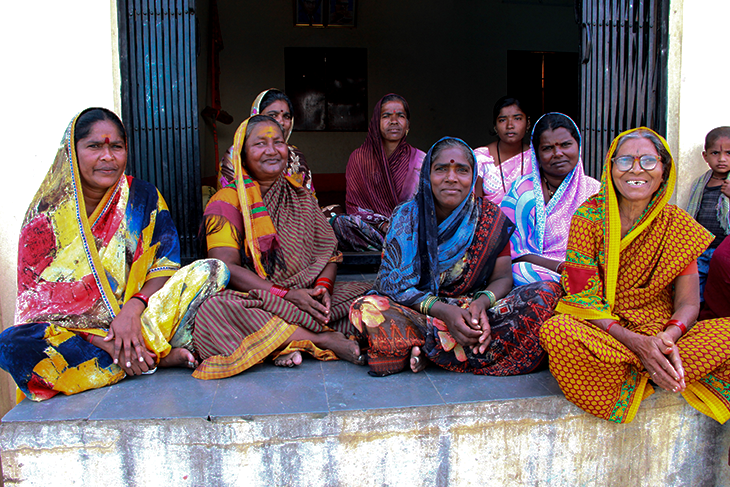“…but, look, the self that hovers in between is neither man nor woman O Ramanatha” – Devara Dasimayya
The vacanas or recitations of the tenth century CE Virsaiva poet saints such as Devara Dasimayya, show that the recognition of gender equality was there for more than a millennia. However as an international movement, women’s assertion for equality was first seen in the struggle for the right to vote in the nineteenth century. And while New Zealand was the first self-governing country to grant the vote to all women over the age of 21 in 1893, some countries in Europe granted it much later – Switzerland in 1971 and Portugal in 1976. In India between 1919 and 1929 all of the Provinces under direct colonial rule and most of the Princely States had granted women the right to vote and be elected, with adopting of the Constitution of India, universal adult suffrage was enforced in 1950. This is testimony to the feminist aspirations of the anti-colonial, freedom struggle.
However winning the voting rights have not translated into women winning the battle of equality across all spheres of lives in India, and across the world. Considering lived realities, it is time we realise that achieving equal legal rights is not enough. These rights need to be meaningful and realisable in reality. To achieve justice for women, as a first step we need to recognize the inequities in our society. Indian society has layers of hierarchies which extend into the social and economic sphere. Across all these vulnerable groups, girls and women, face the additional burden of gender injustice which is experienced in negative bias and discrimination, and in too many occasions oppression and violence. This stretches across the spheres of family, study, work and public spaces.
In 2023, the theme of the Women Equality Day is #Embrace Equity. Equity advocates for those who may have been historically disadvantaged to receive justice. On this day it is important for us to review what we have achieved, and what needs to be done for women’s equality.
The Government of India has put in place a slew of legislations, policies and schemes to address historical and systemic oppression of women. These include the Protection of Women from Domestic Violence Act, 2005; Maternity Benefit (Amendment) Act, 2017; Sexual Harassment of Women (Prevention, Prohibition, and Redressal) Act, 2013; Dowry Prohibition Act, 1961; Medical Termination of Pregnancy (Amendment) Act, 2021; Prohibition of Child Marriage Act, 2006; Pre-Conception and Pre-Natal Diagnostic Techniques (Prohibition of Sex Selection – PCPNDT) Act, 1994; Indecent Representation of Women (Prohibition) Act, 1985 and National Commission for Women Act, 1990. While these laws are steps in the right direction, challenges remain in enforcement as well as attitudinal change.
ActionAid Association has been working on addressing women’s rights issues for the past few decades. Working in the remote corners of the country, we have realised that there is an urgent need for consistent engagement on women’s issues to ensure a discrimination free life, and a fair playing ground for women. We believe that women’s equity needs to be addressed through a life cycle approach, from before birth to death. For example, we are involved in the Beti Zindabad campaign since 2012 to fight adverse sex ratios across states and communities. We have been deeply engaged in implementing the PCPNDT Act to ensure that the scanning of embryos to decipher its sex be stopped in health facilities, so that healthy girls are born. As part of our work, we met with the erstwhile President of India, delivering postcards from thousands of villagers across the country seeking support for the proper implementation of the act.
It is disheartening to note that child marriages continue to plague communities in India. While the rates have declined substantially and now stand at 23%, a lot more needs to be done to ensure that girls remain in school and do not get an early marriage. AAA has been working closely on this issue over the years across states, including states with the highest rates of child marriages such as Bihar, Jharkhand, West Bengal, Rajasthan and Odisha. Through our work, we have built the capacity of 2,000 frontline worker, government officials and Panchayat Raj Institution members in the last year alone to stem the tide of child marriages, with more than 12,000 villages declared child-marriage free and 2,700 child marriages stopped.
Girls’ access to safe, quality education is another area of concern in reaching the goal of women’s equity. We have been ensuring that girls from deprived communities attend school. In the last year alone, more than 110,000 children continued in school, half of them girls.
As girls become women, it is essential to ensure decent working conditions for women workers. AAA has been deeply involved in ensuring equal wages, creating women safe spaces and fighting sexual harassment at the workplace for women across the country. We have also been consistently raising awareness and facilitating access to women’s ownership of land and property.
The need of the hour is to ensure that government and civil society organisations work together to create a society where women and girls can enjoy rights on an equal footing with men and boys. AAA’s approach to women’s rights appears to be most needed in ensuring women’s equity, as it approaches the issue through a comprehensive manner spanning the life cycle of the female foetus, the girl and the woman, and across all spheres of life from the intimate to the public. But to ensure gender equity across all spheres, we need a nationwide campaign to celebrate girls and women, and change societal attitudes that are overwhelmingly patriarchal in nature. Long live daughters, long live women! Beti Zindabad, Aurat Zindabad!
Disclaimer: The article was originally published on womenshine. The views expressed in the article are the author’s and do not necessarily reflect those of ActionAid Association.
 Author: Kumkum Kumar
Author: Kumkum Kumar

